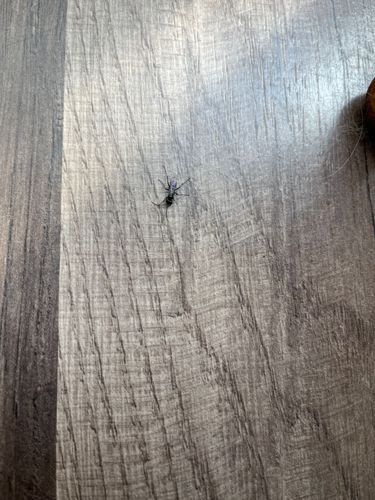Carpenter Ant
Scientific Name: Camponotus spp.
Order & Family: Hymenoptera, Formicidae
Size: Workers range from 6 to 13 mm (0.25 to 0.5 inches) in length, while queens can be larger, up to 20 mm (0.75 inches). They are one of the largest ant species.

Natural Habitat
Carpenter ants typically establish nests in wood, preferring soft, moist, or decaying wood. They are often found in forests, trees, and wooden structures such as homes, barns, and sheds. Indoors, they can be found in wall voids, insulation, and hollow doors.
Diet & Feeding
Carpenter ants are omnivores. Their natural diet consists of honeydew produced by aphids and other sap-feeding insects, plant secretions, fruit juices, and dead insects. Indoors, they will forage for sweets, proteins, and fats, including sugary foods, meat scraps, and pet food.
Behavior Patterns
Carpenter ants do not eat wood but excavate tunnels and galleries within it to create nests. They are primarily nocturnal foragers. These ants live in highly organized colonies that can contain thousands of individuals, including a queen, winged reproductives (swarmers), and various sizes of sterile female workers. Colonies can have a main nest and several satellite nests. Swarming typically occurs in the spring when winged reproductives leave the nest to mate and establish new colonies.
Risks & Benefits
Potential Risks: Carpenter ants can cause significant structural damage to wooden structures by excavating extensive galleries within them, weakening beams, floors, and walls. While they do not sting, they can bite, and larger workers may spray formic acid into the wound, causing mild irritation. Potential Benefits: In their natural outdoor habitats, they contribute to the decomposition of dead wood and help control populations of other insects.
Identified on: 9/8/2025